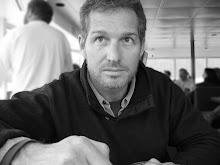I provide research and analysis to a private firm that plans to participate in a rapidly developing sector of the health services industry: ion particle radiotherapy.
The term radiotherapy refers to the medical practice of irradiating cancers. These days radiation therapy is usually accomplished by use of a compact linear accelerator that directs electrons at a tungsten target, producing high energy x-rays that irradiate the targeted malignancy.
However, a growing number of patients have been treated with radiation generated by accelerators that emit beams of larger ionized sub-atomic particles, most commonly protons or ionized carbon. Advocates for this type of radiation therapy prefer it over x-ray radiation because they say the unique physical properties of the ionized particles make it possible to better focus the radiation on tumors thereby sparing the healthy tissue nearby. The Wikipedia entry about Proton Therapy is a good resource to learn about this kind of radiation therapy, but I also recommend reading Paganetti& Bortfeld (for protons) and Amaldi & Kraft (for carbon).
A number of equipment manufacturers have now developed particle accelerators specifically for medical use and have incorporated them into complicated treatment devices which are being marketed to medical groups around the world as the centerpiece of a cancer treatment center.
These Particle Treatment Centers are growing in number, and one day on a whim I started a project of mapping the world's particle therapy centers with Google Maps. It is not an easy task as I am not familiar with many of the regions where these centers exist. I haven't done much yet, so I will have to post my efforts later, but while I was working on my map I found that one Stefan W has already been at the same task for months. He isn't always precise in some of his marks, but he has extensive knowledge of the field and has done a lot of work tracking this sector. I will certainly use his very useful map as a resource.
Check out Stefan's work here:
View Larger Map
Subscribe to:
Post Comments (Atom)

No comments:
Post a Comment